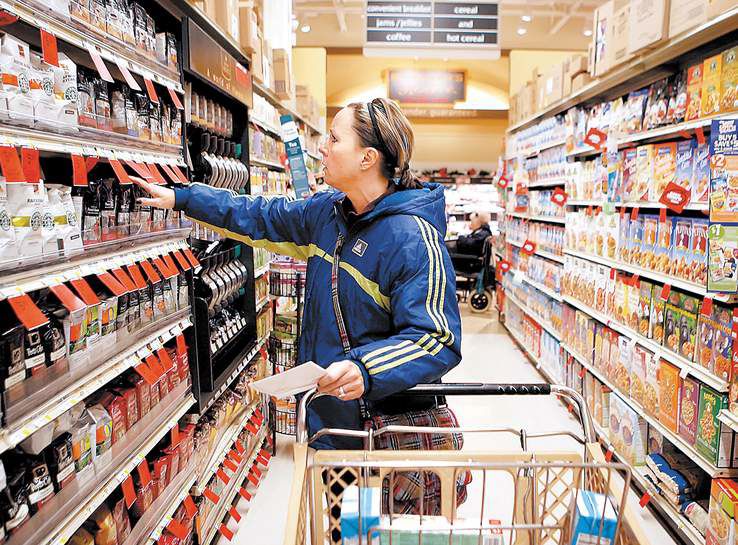Thrifty shoppers snap up store brands
Published 4:00 am Tuesday, December 2, 2008

- Julie Ernst skips over the national brands and picks out a store’s private label coffee while shopping in Elmhurst, Ill., last month. Store brands have evolved from cheap copies of the name brands to quality lines that offer competition for buyers.
CHICAGO — On a recent grocery shopping outing, the chicken broth and applesauce in Julie Ernst’s cart bore the Safeway label instead of familiar brand names such as Swanson or Mott’s.
“Normally, I would have bought a name brand,” she said, pushing her cart through an Elmhurst, Ill., Dominick’s, a chain owned by Safeway. “But these are on sale — and then there’s the economy.”
Trending
A permanent shift?
The economy — a roiling caldron of evaporating jobs and soaring food prices — has caused shoppers to migrate to cheaper store brands at rates not seen since the last recession in 2001, according to market researcher Nielsen Co.
Back then, they shifted right back to name brands when the economy perked up.
But this time, the shift may be more permanent, potentially benefiting food retailers at the expense of packaged-food manufacturers, industry analysts say.
Since the last recession, supermarket chains have poured millions into beefing up their private labels, launching new brands, improving packaging and bolstering quality.
“I do think we are in for some very fundamental long-term shifts for private label just because so many retailers are getting behind it,” said Todd Hale, a senior vice president at Nielsen Co. “And, without question, consumers have a more positive attitude toward private label.”
Trending
The upshot: When shoppers such as Ernst switch, they may be more likely to leave a name brand behind permanently.
“I think if I don’t see any difference, I’ll stick with the store brand,” she said.
The difference: price
Shoppers increasingly find little difference between name brands and store brands, which typically cost 25 percent less. A recent Nielsen survey found that 63 percent of consumers said the quality of most store brands is as good as that of name brands, up from 60 percent three years ago.
And a successful store brand can lure customers from one chain to another, experts said. Take Andriani Siavelis, who was shopping this week at the Elmhurst Dominick’s. She has become partial to the O brand, which Safeway has put on more than 300 organic items, from fresh produce to cookies to frozen pizza.
Siavelis’ cart carried several O items — black beans, navy beans, eggs. The brand has changed her shopping behavior, she said, giving her less incentive to shop at chains that focus on organic. “Now I don’t have to go to Whole Foods or Trader Joe’s,” she said.
Private labels are paying off
Store brands have come a long way, and they’re paying off for grocers.
Once simply cheap copycats, store brands are looking and functioning more like name-brand products, food industry analysts say. And they’re becoming more important to conventional grocery chains as a tool to help battle tough competition from both discounters and health-oriented stores such as Whole Foods.
California-based Safeway Inc. said store brands typically make up 15 percent to 25 percent of a grocer’s sales, and that they are at the upper end of that range. Sales have been growing at a healthy clip in recent years as Safeway has invested heavily in new private labels.
“Even ahead of the economy, we made an investment to drive structural change with the consumer,” said James White, Safeway’s senior vice president of consumer brands.
In the past few years, supermarkets have focused particularly on developing premium private labels, which sell at less of a discount than mainline store brands. Safeway has been particularly successful with the development of its O brand for organic foods, analysts said.
O was launched in late 2005 on 30 items and has grown to 350. The line did $150 million in sales in its first full year; $400 million is expected for 2008.
— Chicago Tribune








